What to see: coral pinnacles, walls, caverns, tunnels and crystal clear waters. Nurse sharks, turtles (hawksbill, loggerhead, green), spiny lobsters, crab, sting rays, variety of tropical fish like queen angelfish, schools of jacks, endemic splendid toadfish and some smaller creatures like pipehorses, arrow crab and sea horses. Occasional big pelagics like hammerhead sharks and eagle rays.
Level: All levels, the best dive sites for intermediate to experienced due to strong and sometimes unpredictable currents
How to get there: Direct flight to Cozumel from many US cities or from Cancun / Flight to Cancun, from there take a taxi ($40) or bus ($5) to Playa del Carmen from where the ferry leaves at least every hour, 30 minutes ferry ride ($10).
Water temperature: from 24°C in winter to 31°C in summer (75-88°F)
Visibility: 30m (98 ft) and more usually, although with strong winds and bad weather the visibility can drop
Season: All year round, best season May/June not too hot, (low season), not much rain. Rainy/hurricane reason Aug-Nov, high season and therefore higher prices Dec-Apr, May-Jul when there is a possibility to see turtles nesting
Price: For two dives which are normally back to back: $70-120. Most shops offer a discount for multiple dives / dive packages.
My trip: I chose the wrong place, don’t even get me started! There are many options, Blue Angel Resort has been recommended to me by friends.
The resort diving is the more expensive option but has the advantage of having everything in one place. The cheaper option is to stay in one of the many hotels in town (starting at about $ 25/night) and to book diving separately, which I ended up doing. I did dive with Carlos and Simon a small family-run operation. The guides are experienced and they have many customers coming back year after year to dive with them. I was the only newby on the boat. The dive operation will either pick you up at the hotel or you take a taxi ($ 6) to the marina.
The Caribbean island of Cozumel lies off the Mexican Yucatan peninsula where its impressive reef structures and crystal clear waters offer some of the best diving in the Caribbean. I met several scuba divers who come back to Cozumel every year as it is fairly cheap compared to other destinations in the area and is easy to reach from the US.
Some of the reefs around the island are protected as part of the Arrecifes de Cozumel National Park. The park covers an area of 120 km2 (46 sq mi) which includes the southern reefs with most of the dive sites. The rest of the area is also famous for sport fishing and two dolphinaria can be found on the island. Both are built in the ocean, one even inside the national park which makes it look more natural. It is not!! These intelligent marine mammals should not be held in captivity and I find it very sad to see how many dolphinaria exist in the region around Cancún. Please don’t support this and don’t swim with captive dolphins.
Back to the diving; my favorite dive sites are in the south of the island and include “Santa Rosa Wall”, “Palancar” (which is actually four dive sites), “Colombia” and “casa blanca”. Most of these are composed of impressive coral structures, walls, caverns, caves and tunnels. So there are a lot of places to swim through and play I do love to swim through structures like this and discover what there is to find in every corner. Often small schools of fish, huge crabs and lobsters hide underneath the overhangs and in the caverns while the light creates magical patterns in the water shining down between the coral.
“Casa blanca” doesn’t seem to be an official dive site but there is a white house on the beach. This ended up to be one of my favorites as we’ve seen soooo many turtles, friendly nurse sharks, the famous splendid toadfish and pipehorses at this site.
One of the most famous dive sites is the “devils throat” at “punta sur” which is a cave leading down from 24 m (80 ft) to 41 m (135 ft) where it opens into a wall. This dive is at the edge of the limits of recreational diving and only suitable for very experienced divers. Unfortunately we couldn’t go there due to the weather. I will have to do that next time ,
Outside of the sheltered area between the reefs the currents are ripping. Drift diving is very common in Cozumel. I love this too. With the incredible visibility of way more than 30 m (98 ft) the drift dives feel more like flying than diving. Seeing all the stunning coral, sponge and gorgonia formations passing by with loads of tropical fish, turtles and nurse sharks without even moving is an amazing experience.
It’s getting a bit more difficult when trying to take photos as then you might have to fight against the currents. A lot of work for a most probably not that perfect picture – try to hold a camera still while finning hard…
The currents are not always predictable, they change directions and on a crazy day there might be a phenomenon called “washing machine”. This type of current is a bit like a tornado caused by two counter-currents which can suck a diver down or push him up. I experienced a very mild one which did suck me down somewhat, however this was easy to reverse by putting some more air in my BCD. It didn’t get me by surprise as I’ve already seen my bubbles going in a big circle around me instead of going up to the surface. So far I’ve only seen crazy currents like that in Komodo, Indonesia.
The turtles in Cozumel are under protection therefore it is possible to see them on most dives and they are not scared of humans. It is possible to swim very close to them, they look at you but they don’t leave. I had a wonderful encounter with a turtle that swam back down from the surface – I was just staying where I was (nor really, as I was drifting but so was the turtle) watching her. She swam straight towards me, always looking me in the eye and then passing just a few cm below me continuing down to the reef. Wow!
Also the nurse sharks are very friendly. However, this is for a different reason – the lion fish in the Caribbean are not native and pose a threat to the ecosystem. As a consequence divers started to kill them during dives and then feed the dead lion fish to the nurse sharks. The sharks came by having a look at each diver checking for food.
I’ve never seen so many spiny lobsters as in Cozumel. I often discovered a small overhang with several lobsters squeezing together under it as if there were no other places to hide. Lobsters normally sit under something with only the antennae sticking out of it. However, in Cozumel I’ve seen some out walking around. I tried to take a video of one which was walking mostly backwards away from me on its 10 legs. They can also swim (as well backwards) but I’ve never seen that.
Besides these creatures the area is home to many tropical fish, an endemic splendid toadfish (the underwater sign used for it I knew as “cuttlefish”, you can imagine how I did not see the toadfish under a rock at first while looking for a cuttlefish somewhere above), some schools of larger fish like jacks and occasional pelagics (mostly eagle rays).
Cozumel offers a variety of impressive dive sites which are fun also for more advanced divers – formations with endless swim-throughs, ripping currents for awesome drift dives and diverse marine life. Many tourist areas in Mexico have tourist taxes - so check before you go using this link.
Have you been to Cozumel or would you like to go there? I would love to hear what fascinates you the most about Cozumels reefs!

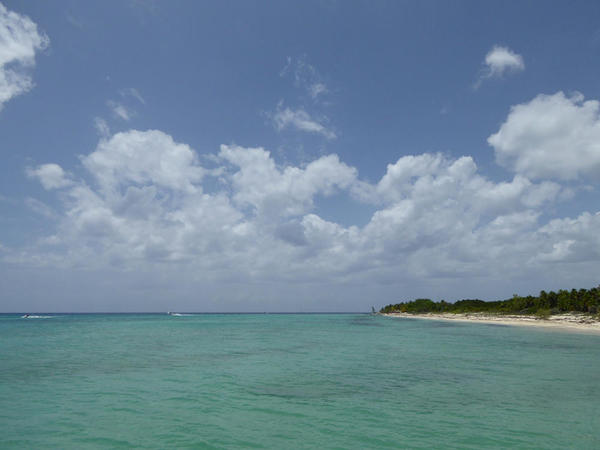
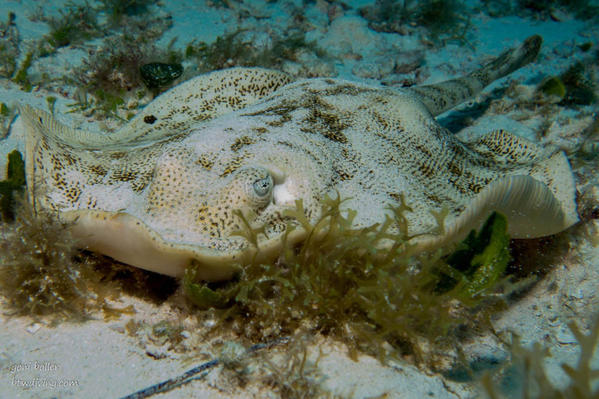
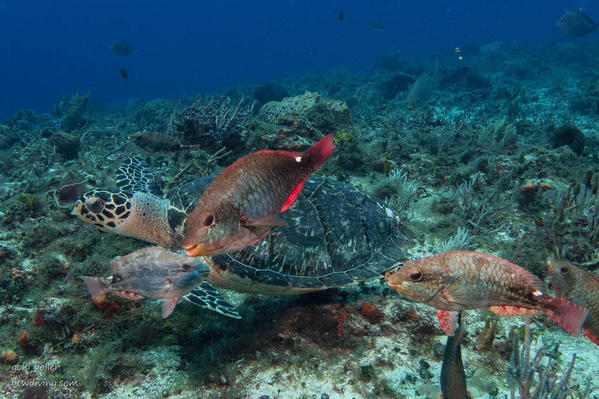
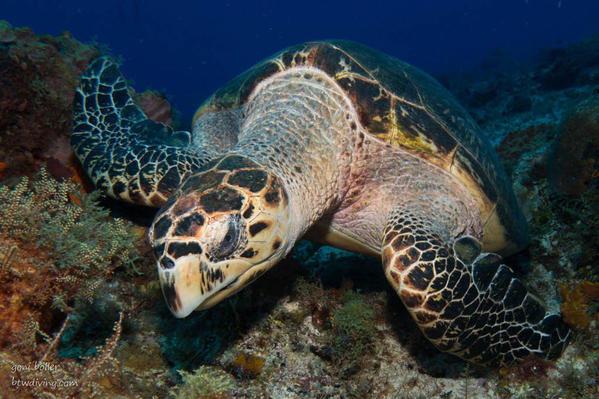
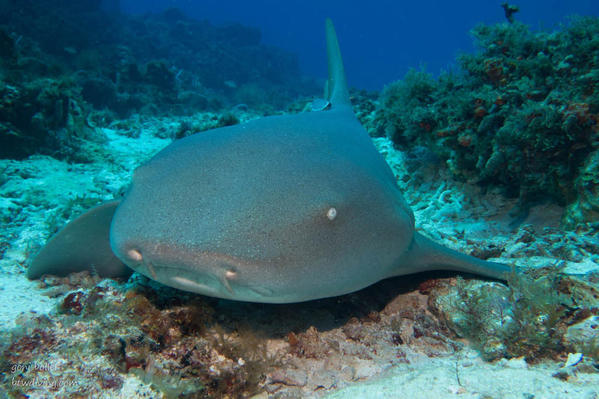
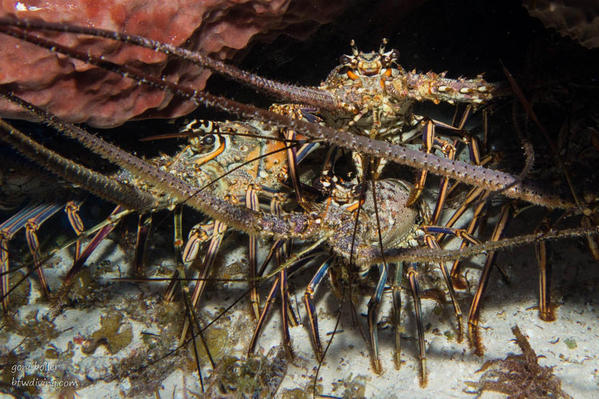
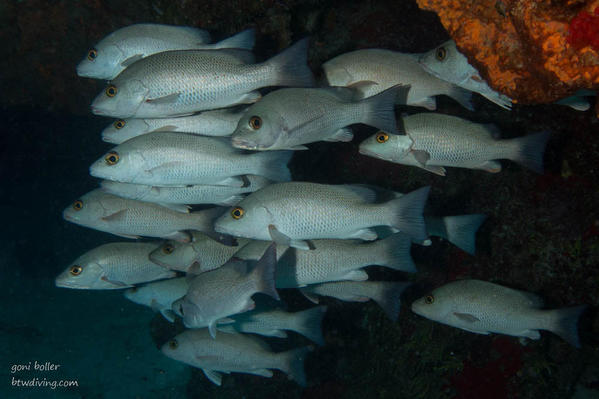
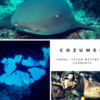







Comments (2)